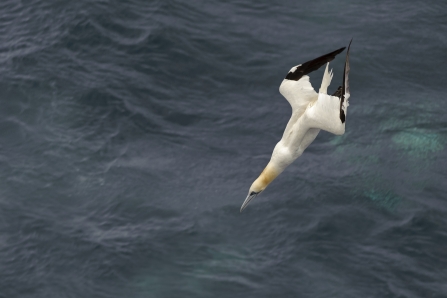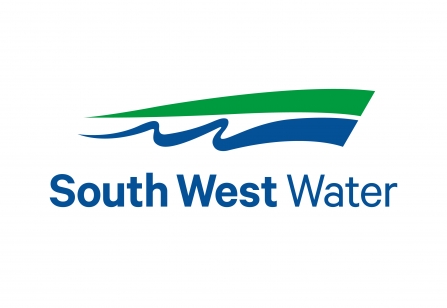Photo; Paul Madgett
Captivating Coasts
Devon's Captivating Coasts
Our coasts support many different environments - cliffs, rocky shores, sandy beaches, dunes and muddy estuaries – each with its own unique wildlife! Devon is the only English county with 2 separate coastlines and they are very different indeed! On the north coast you have the rugged, tall cliffs with spectacular views and the UK's first UNESCO Biosphere Reserve! The long stretches of sandy beach on the north contrast markedly to the winding coastline of South Devon, with its beautiful estuaries, coves and busy beaches in the summer time!
The coast is a wonderful place to experience the force of nature in all its wildness and rugged beauty! It is also the perfect place to watch for wildlife further out at sea or to hunt for treasures down on the seashore! Scroll down to meet some of Devon's amazing coastal wildlife and download some curriculum linked activities for your next captivating coastal walk!

Diving gannet - Chris Gomersall/2020VISION
Devon's craggy cliffs and rocky outcrops are home to a multitude of seabirds. Gannets are one of the largest, with their brilliant white plumage, black wing tips and creamy yellow head! They can often be spotted diving head-first into the water at break neck speed to catch schooling fish! Gannets are also a really good indicator of dolphin activity in the water below!
White beaked dolphin - John Carnell
Coastal cliffs provide a panoramic view of the ocean and are the best place to search for dolphins, porpoises and basking sharks! Around 20 species of marine megafauna (large marine animals) are regularly recorded around Devon's two coasts! Lyme Bay in East Devon is home to a small, but very special population of White-beaked dolphins, who use an area offshore to feed, breed and raise their young!
Coastal Wildlife Guides to Download
Make your own binoculars
Why not have a go at making your own binoculars for next time you head to the coast? You never know, you might spot a seabird, dolphin or even a basking shark!
Strandline Detectives
Have you ever noticed when you walk along the beach, sometimes there is lots of 'stuff' washed up? This is what we call the 'strandline' - a collection of material from the sea, which has been left behind after the last high tide. This seaweed and other material provides excellent food and habitat for a multitude of invertebrates, which break it down and recycle the nutrients. These invertebrates in turn feed the seabirds and small mammals like bats and hedgehogs, who often visit the shore at night! So the strandline provides its own very important ecosystem!
But the strandline can also be full of wildlife treasures for the right seashore detective to discover...

A mussel shell - Gemma de Gouveia
Amongst clumps of seaweed you’ll find empty shells. Common discoveries might include limpet shells, the two halves of mussel shells – blue on the outside and white on the inner - and if you are really lucky, you might find a big whelk shell! You're also very likely to find white, surfboard shaped discs, which are known as cuttlefish bones.
Catshark eggcase - also known as a 'mermaid's purse'
Look out too for the leathery outlines of mermaid’s purses. These are actually the egg cases of skates and rays. In the summer and early autumn, the strandline is also a good place to find stranded jellyfish - but be careful not to touch, as they can still sting after they've washed up!
Strandline Guides to Download
Go on a beach clean!
Unfortunately, the strandline can sometimes be full of tiny pieces of plastic, fishing gear and other litter! Carrying out your own beach clean or litter pick is the one of the most rewarding activities you can do to help protect our ocean! Why not take a bag with you next time you go on your daily walk?
Love the beach? Brush up on The Seashore Code:

Thanks to South West Water for supporting the production of these online resources. Head over to our You Tube Page to watch some amazing underwater films!


